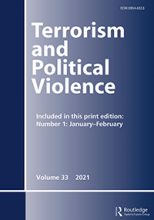This article maps mechanisms by which online social media activities may contribute to right-wing political violence. High-impact studies on the wave of right-wing and racist violence in the 1990s and early 2000s established that mass media discourse on immigrants and previous violent incidents had a significant influence on the prevalence of radical right violence. This link was captured by Koopmans’s and Olzak’s notion of discursive opportunities. However, this was before the dominance of online social networks and social media, which changed the media landscape radically. We argue for broadening and refining the operationalization of the concept of discursive opportunities in social movement studies as well as including in our theoretical models new mechanisms brought about by the new online media. In relation to radical right and anti-immigrant mobilizations in Sweden in the 2010s, we elaborate and exemplify three mechanisms through which activities on social media may affect the incidence of violence: a) having an increasingly co-produced discursive opportunity structure, b) making inter-group dynamics in movement groups and networks trans-local, and c) sharing (rare) practical information and co-ordinating activities.
